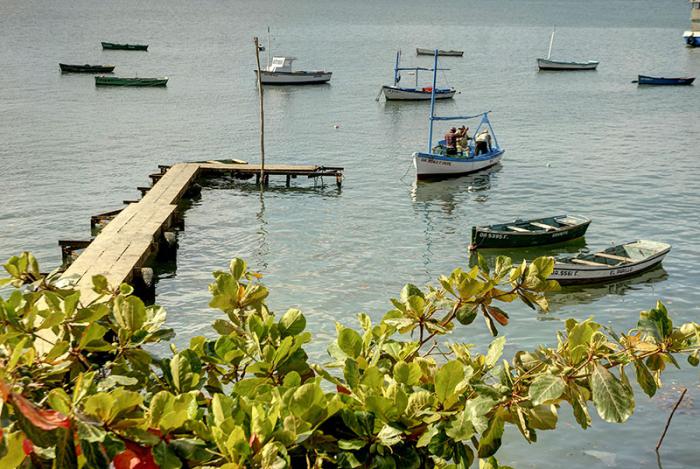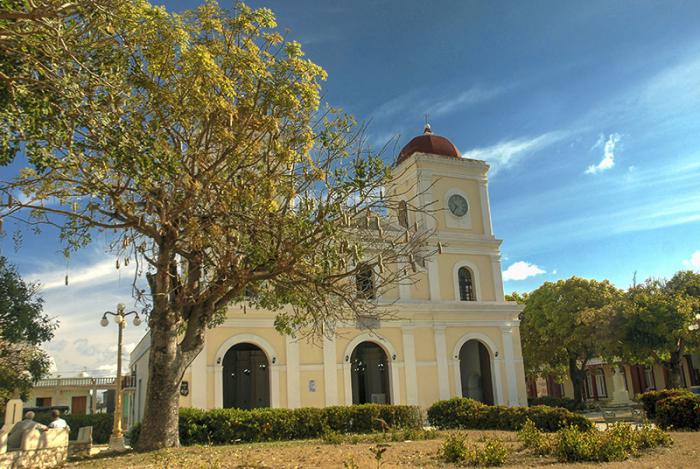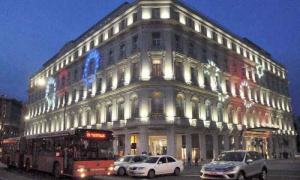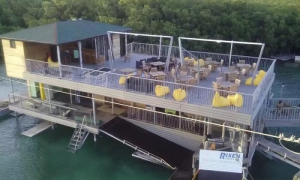The costal fishing village of Gibara captivates residents and visitors from all over. Many of the people who were born or have established roots here state that those who founded the city almost 200 years ago in the north of the what is today the province of Holguín, were aware of the area’s appeal, located right on the Atlantic coast.
Jorge Luis Rodríguez Salgado, self-employed worker and proprietor of the enticing La Cueva Taína restaurant, which offers traditional local dishes, national and international cuisine, speaks to clients about Gibara’s enduring charm.
Also head chef, Rodríguez Salgado highlights, among other characteristics the unique golden color of his fried bananas owing to their high iron content from the soil in the region. What is more, he explains, growers plant directly in a hole they make in the rock and fill with earth, thus nature blesses their tenacity.
Workers at the Ordoño Hotel, a building rescued from ruins, know all the local tales. Of course the most popular story features the founder of the establishment – affiliated with the Cubanacán chain. They say that his love for his wife was so strong that following her untimely death, he ordered a lookout to be built on the highest point of the building from where he would observe her grave every day.
The truth is that the sea breeze, predominantly colonial style buildings, local heritage, tangible legacy of passionate romances, and above all, the spiritual richness and naturally enterprising nature of the people which today inhabit this part of Cuba, make Gibara - by all accounts - a promising location for tourism.
REACHING NEW HEIGHTS
Alexander Ávila Bofil, Municipal Assembly of People’s Power vice president, explains in minute detail the present and future prospects for tourism in the territory.
“In is one of our government body's recent meetings, Tourism Minister, Manuel Marrero Cruz, who is following what we are doing very closely, has urged us to increase lodging capacities through the expansion of private Bed and Breakfasts or hostels. This means enlisting people who have suitable homes for the activity, above all in the historic center, ones with original colonial features.
“Today, we have 73 rooms across all B&B/hostel establishments providing lodging services to foreign and national tourists which exceed the capacities of the three facilities the Ministry of Tourism’s has here.”
He notes that a study currently being carried out to determine maximum expansion rates over the short-term, suggests that room capacities could be increased to over 1,000, depending on cooperation from residents.
In regards to private sector food establishments, specifically restaurants, there exist 15, some located within the hostels themselves. B&B owners are not only authorized but encouraged to provide food services.
What is more, the city and municipality is set to receive the benefits of various local development projects linked to the leisure industry. This, the result of a Masters Degree project led by a group of tourism representatives from the area, explains José Manuel Palma Tamayo, municipal director of Culture.
“I suggested we put the Casa de Santa María – a building from the colonial era located 5km from the municipal capital – to use. It was part of a 19th century sugar plantation and we wanted to recreate that atmosphere. There are shackles, farming tools, and other period objects for the tourists to interact with.”
This idea has received support from experts affiliated with the local Transport Office to enable visitors, who can also tour the bay by boat, to travel to the former sugar plantation, by river.
Raciel Camping has suggested creating the Caverna Los Panaderos eco-caving-archeological trail. The initiative offers ecologically focused excursions and a DVD of the experience similar to that of Chile’s Benavides caves tour. However, the creator notes that the Cuban initiative will go even further with the community taking a leading role in developing a culture around caving and establishing the activity within the area.
The need for complementary offers has suggested the possible restoration of small forts constructed in Gibara during the period of Spanish rule, as well as the opening of a botanical garden and decorative plants center, providing tourists with services and products from the area itself.
A plan to produce tiles and mud bricks, materials used in the majority of buildings constructed during the colonial period, and therefore extremely important for works geared toward preserving the area’s heritage, represents another promising initiative.
Municipal authorities have done the math and are looking to the future, and have calculated that 40% of revenue earned from these local development projects will be reinvested into creating new tourist offers.
Secretary of the Gibara branch of the Cuban Association of Artisans, Mayelín Méndez González, noted the government’s commitment to encouraging the participation of all citizens in the projects underway.
The Association has 59 members including those working in textiles, carving, and miscellaneous crafts, who work with shells, wood, and seeds typical to the zone, as long as they are from among the species authorized to be used and sold. Provided there are no transgressions, the doors are always open to artisans, she states.
“We are able to respond to demand as the number of tourists grows. Our chief artisans have teams of people who produce for them, thus our main concern is to increase the number of products without compromising quality or originality.”
MINISTRY OF TOURISM INITIATIVES
Also making concerted efforts is the Ministry of Tourism (Mintur). Thanks to recent investment works and given the impeccable service and patrimonial value of the Ordoño and Arsenita hotels - part of the Encanto brand - both have become true lodging gems.
Together with the El Faro hostel, these accommodations constitute The Gibara Comprehensive Tourist Enterprise’s main hotel facilities, offering 43 rooms. However, according to José Walker, development and investment expert from Mintur’s provincial delegation, the company aims to raise that number to 200 with the completion of the Almirante Hotel this year.
Studies carried out to monitor the impact of such initiatives on specific areas show that Gibara is relatively popular with foreign tourists, but in reality still lacks sufficient lodging capacities.
If, between both the state and private sector, this deficit can be resolved, as is the goal, many tourists, on arrival to the province of Holguín, would be more inclined to chose to stay in the costal town for several days. According to the figures around 8,000 tourists visit Gibara during high season and an average of 4,000 in low.
Special attention has been geared toward the creation of non-hotel capacities in the city center, which includes the La Loja Bar and Siglo XX cafeteria, and will soon enjoy the benefits of a leisure club equipped with new and appealing facilities.
“All opportunities linked to Gibara Bay have also been researched. The area has important underwater landscapes and the coast line is good for fishing and walks,” notes Walker.
In fact the Marlin-Guardalavaca Water Activities and Marina enterprise just inaugurated a floating dock anchored to the bottom of the bay. There, various kinds of catamarans arrive once a week, having set sail from the Vita port with visitors staying in and around Holguín’s main tourist region, the majority in the costal municipality of Banes. The 10 mile trip includes at stop in Bariay where Christopher Columbus first landed in 1492 and follows the invader’s route all the way to Gibara.
Plans are also being developed for the Protected Area of Caletones, which include nature tourism offers centered on bird watching activities, given that the zone is an important habitat for these avian species. Likewise, Caletones’ many flooded caves make the area an attractive option for caving-scuba diving activities.
Meanwhile Walker highlighted agriculture as Mintur’s fourth area of development. The aim is to share Gibara’s strong farming traditions with tourists, with activities taking place on the La Esperanza and La Victoria farms - both of which boast buildings of great patrimonial value - and as is logical, the surrounding communities.
According to the official, the close links between local authorities and Mintur directors will guarantee the success of these plans; working together to comprehensively exploit the economic, cultural and patrimonial riches of the municipality of Gibara and its beautiful capital.










